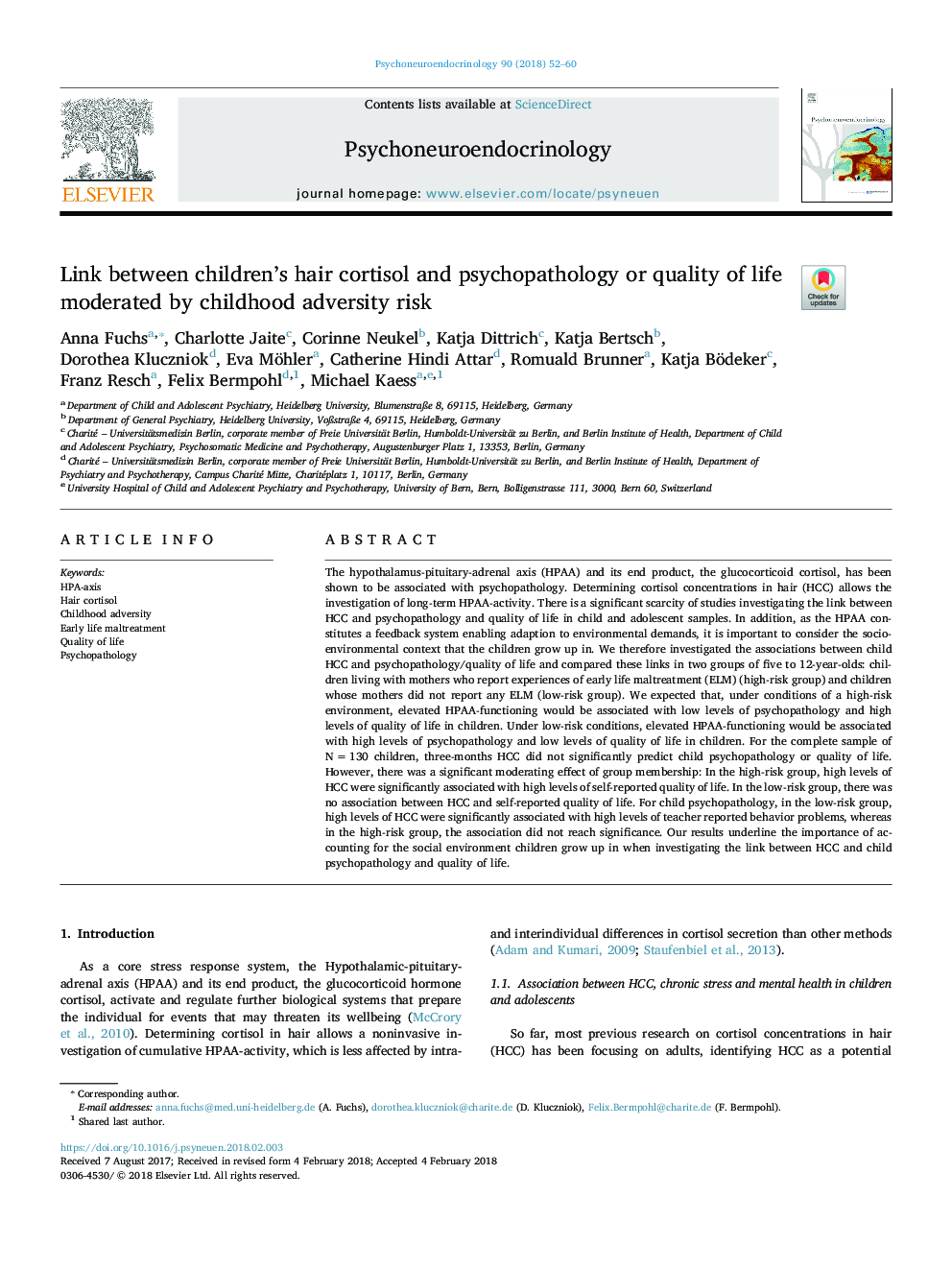| Article ID | Journal | Published Year | Pages | File Type |
|---|---|---|---|---|
| 6817708 | Psychoneuroendocrinology | 2018 | 9 Pages |
Abstract
The hypothalamus-pituitary-adrenal axis (HPAA) and its end product, the glucocorticoid cortisol, has been shown to be associated with psychopathology. Determining cortisol concentrations in hair (HCC) allows the investigation of long-term HPAA-activity. There is a significant scarcity of studies investigating the link between HCC and psychopathology and quality of life in child and adolescent samples. In addition, as the HPAA constitutes a feedback system enabling adaption to environmental demands, it is important to consider the socio-environmental context that the children grow up in. We therefore investigated the associations between child HCC and psychopathology/quality of life and compared these links in two groups of five to 12-year-olds: children living with mothers who report experiences of early life maltreatment (ELM) (high-risk group) and children whose mothers did not report any ELM (low-risk group). We expected that, under conditions of a high-risk environment, elevated HPAA-functioning would be associated with low levels of psychopathology and high levels of quality of life in children. Under low-risk conditions, elevated HPAA-functioning would be associated with high levels of psychopathology and low levels of quality of life in children. For the complete sample of Nâ¯=â¯130 children, three-months HCC did not significantly predict child psychopathology or quality of life. However, there was a significant moderating effect of group membership: In the high-risk group, high levels of HCC were significantly associated with high levels of self-reported quality of life. In the low-risk group, there was no association between HCC and self-reported quality of life. For child psychopathology, in the low-risk group, high levels of HCC were significantly associated with high levels of teacher reported behavior problems, whereas in the high-risk group, the association did not reach significance. Our results underline the importance of accounting for the social environment children grow up in when investigating the link between HCC and child psychopathology and quality of life.
Related Topics
Life Sciences
Biochemistry, Genetics and Molecular Biology
Endocrinology
Authors
Anna Fuchs, Charlotte Jaite, Corinne Neukel, Katja Dittrich, Katja Bertsch, Dorothea Kluczniok, Eva Möhler, Catherine Hindi Attar, Romuald Brunner, Katja Bödeker, Franz Resch, Felix Bermpohl, Michael Kaess,
